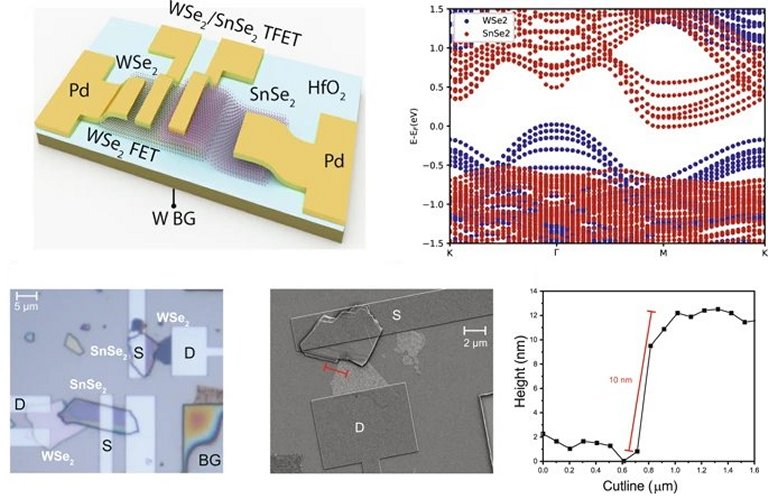TECH

Transistor achieves efficiency close to human neurons
Neuromorphic transistor
"The transistor is the most abundant artificial object ever created by human beings. It is the basis of all our computational infrastructure and the way we interact in real time with portable information processing in the 21st century. It is the basic foundation for the processing of digital and analog signals, "says Professor Adrian Ionescu, from the Federal Polytechnic School of Lausanne, Switzerland.
Thus, it is not without reason that the researcher is proud of the fruits of his team's latest work: They built transistors with an energy efficiency that starts to approach the efficiency of the neurons that make our brain work.
"Our neurons operate at about 100 millivolts (mV), or approximately 10 times less than the voltage supplied by a standard battery. Our technology currently operates at 300 mV, which makes it about 10 times more efficient than a conventional transistor. No other electronic component in existence today approaches that level of efficiency, "said Ionescu.
This paves the way not only for a new generation of computers and electronics in general that are faster and with less battery consumption, but may also enable wearable technologies - from smart clothes to medical implants - but also for cutting-edge processors that incorporate artificial intelligence into the hardware.
And the team did not finish the job, not only because it is now necessary to translate the laboratory work to the technology used in the factories, but also because they think it is possible to go much further.
"Today, we know that the human brain consumes approximately the same amount of energy as a 20-watt light bulb," said Ionescu. "Despite consuming so little energy, our brain is able to perform tasks that are several orders of magnitude more complex than what a computer can handle, such as analyzing the information provided by our senses and generating intelligent decision-making processes. . Our goal is to design electronic technology for portable devices with an efficiency similar to that of human neurons. "

2D transistor
The new high efficiency transistor is formed by two layers of the semiconductor materials tungsten diselenide (WSe2) and tin diselenide (SnSe2), both in the form of 2D materials, with only one atomic layer of thickness.
Known as the 2D / 2D tunneling transistor, the component is very close to the fundamental limits of electronic technology, although it shows that Moore's Law still has some momentum. But there are already other technologies on the way, such as spintronics and quantum computing.
Article: WSe2 / SnSe2 vdW heterojunction Tunnel FET with subthermionic characteristic and MOSFET co-integrated on same WSe2 flake

No comments:
Post a Comment